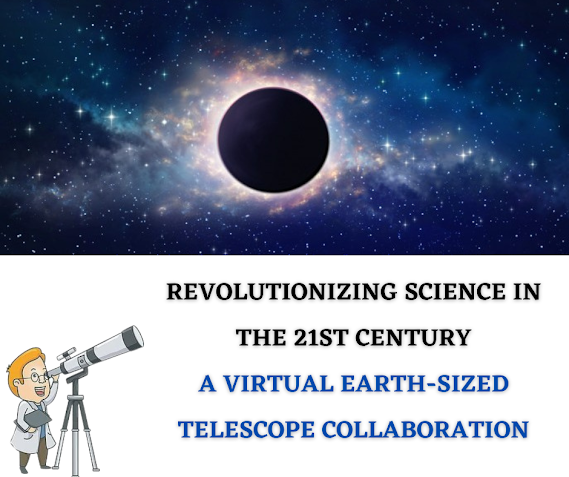REVOLUTIONIZING SCIENCE IN THE 21ST CENTURY
A VIRTUAL EARTH-SIZED TELESCOPE COLLABORATION
The
ngEHT Collaboration Pushing the
Boundaries of Science and Collaboration
In
2019, the world was stunned by the first-ever image of a black hole produced by
the Event Horizon Telescope (EHT) collaboration. Now, the next generation Event
Horizon Telescope (ngEHT) collaboration is taking it a step further by aiming
to create high-quality videos of black holes. But this collaboration is
groundbreaking in more ways than one, as it brings together experts from
natural sciences, social sciences, and humanities to push the boundaries of
science and collaboration.
Virtual Earth-Sized Telescope
To
produce black hole images and videos, a telescope almost the size of Earth itself
is required. This is where the ngEHT collaboration comes in, using many
telescopes and telescope arrays scattered across the globe to form a single,
virtual Earth-sized telescope through very long baseline interferometry. With
new telescopes at new sites being built to better fill in the gaps of the
broken mirror, the collaboration is currently in the process of selecting
optimal places across the world to increase the number of sites to
approximately 20.
Collaboration Challenges
Collaborating
with over 300 experts across different disciplines is not an easy feat. The
history, philosophy, and culture working group has just published a landmark
report outlining how humanities and social science scholars can work with
astrophysicists and engineers from the first stages of a project. The report
has four focus areas: collaborative knowledge formation, philosophical
foundations, algorithms and visualization, and responsible telescope siting.
Collaborative Knowledge Formation
One
of the challenges of collaboration is determining what will be included in a
paper or project. It's important to balance collaborative approaches and
structure everyone's involvement in a way that promotes consensus but also
allows people to express dissent. Diversity of beliefs and practices among
collaboration members can be beneficial to science.
Philosophical Foundations
Philosophy
plays a crucial role in bridging the gap between formal mathematical theory and
the messy world of experiments where idealized assumptions often do not hold
up. Philosophers can help investigate the underlying assumptions physicists
might have about a phenomenon and consider epistemic risks.
Algorithms and Visualization
The
aesthetic choices regarding the final black hole images and videos take place
in a broader context of visual culture. Choices must be made to communicate
scientific findings to wider audiences, such as choosing an orange-red color
palette to communicate the heat of the glowing material around the black hole
in the image of Sagittarius A*.
Responsible Telescope Siting
The
choice of locations for telescopes, or telescope siting, has historically been
determined by technical and economic considerations. The ngEHT collaboration
aims to advance responsible siting practices and draw together experts in
philosophy, history, sociology, community advocacy, science, and engineering to
contribute to the decision-making process in ways that include cultural,
social, and environmental factors.
Changing Science in the 21st Century
The
ngEHT collaboration is an exciting example of how ambitious plans demand
innovative approaches and how sciences are evolving in the 21st century. It
highlights the importance of collaboration across different disciplines, as
well as the need for responsible and ethical considerations in scientific
endeavors.
The ngEHT collaboration is not only pushing the boundaries of science but also changing the way we think about collaboration. It serves as a model for future collaborations, where diverse perspectives and expertise can come together to tackle complex scientific challenges. The ngEHT collaboration's groundbreaking work on black holes will undoubtedly continue to inspire new breakthroughs and push the limits of our understanding of the universe.
For the latest News Follow One1ClickDownload on Twitter, Facebook, Reddit


